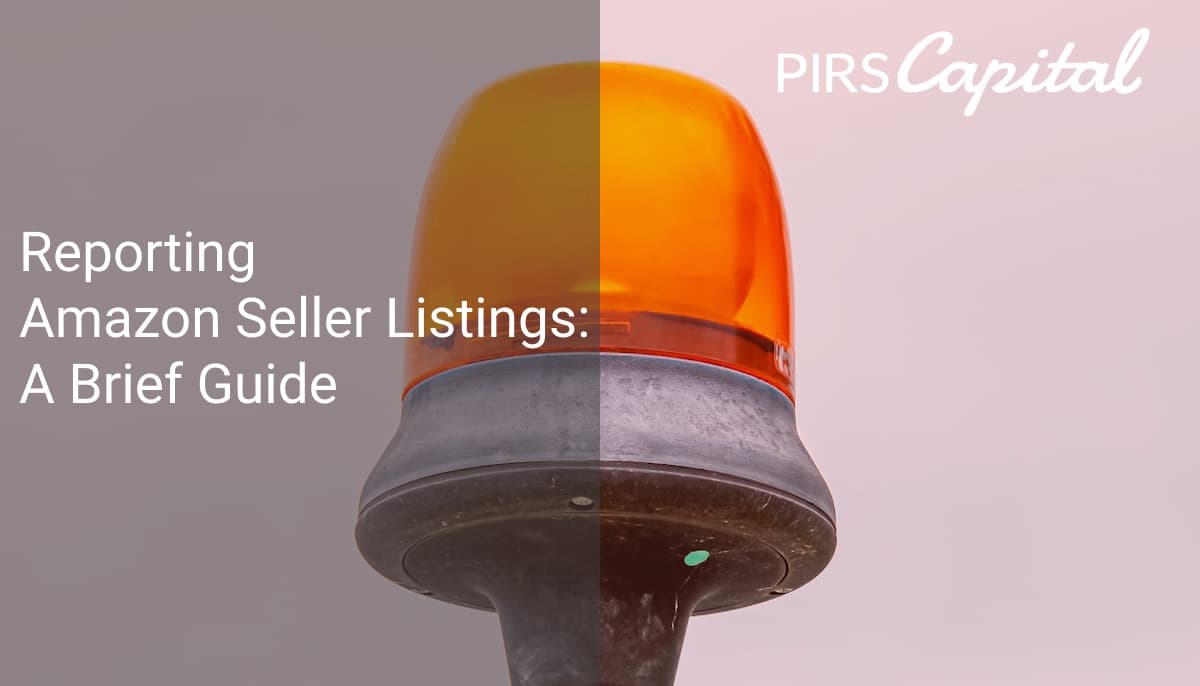Amazon has become an industry leader in the lightning-fast world of online retail by providing vendors with a massive online venue to advertise their wares to buyers all over the world. In a sea of millions of products, it is essential that your Amazon seller listings stand out through accuracy, quality, and compliance. Our goal with this article is to delve into why it’s so important to report deceptive Amazon listings and offer guidance on how to do so successfully.

The Value of Reporting Amazon Listings
Before we get into how to do this, let’s see why this is an important step for both vendors and customers to report Amazon listings.
- Increase your product’s exposure. Sending in reports of fake or misleading listings helps keep Amazon’s search results honest, increasing the chances that buyers will find legitimate sellers and products.
- Ensure the trust of shoppers. Customers are protected from purchasing fake or deceptive goods when listing violations are reported, which increases their trust and commitment to Amazon.
- Encourage healthy rivalry. In addition to encouraging ethical business practices and supporting general marketplace improvement, reporting unethical practices or unfair competition helps preserve a level playing field for all vendors.
Not only is it the right thing to do from a moral standpoint, but it’s also a smart business move that helps keep the market honest and protects your company’s interests. You may help the platform’s product quality, customer trust, and competitiveness by actively reporting breaches.
The Various Forms of Infringement That a Vendor May Commit
A valid complaint against a vendor might be filed for a variety of offenses. Let’s take a look at some of the ways in which a vendor might be reported for wrongdoing.
1. Inaccurate Product Description
You can report a seller for using inaccurate or misleading information when listing a product. This includes listing content, photos, and descriptions. If the product you received doesn’t match the description in terms of model number, weight, or measurements, you can file a complaint against the seller.
2. Fake Goods
This is a common reason why buyers report on Amazon their items on sale. Amazon’s Anti-counterfeiting Policy allows customers to report sellers when they believe they have received a fake or counterfeit product from them. Selling fake goods on Amazon is not only against their terms of service but also illegal. If you’ve been scammed by unscrupulous vendors on Amazon, you can file a complaint.
3. Price Breaks
You can report merchants for breaking the standards if they list prices that are much higher than their competitors. A retailer may charge $50 for a product that would normally cost $20. This is possible when there is a great demand for the product or in the case of dire need during a crisis or a natural disaster.
4. Hijacking (Seller’s Perspective)
You can file a complaint against another vendor who steals your listing without your authorization. Sellers who are dishonest often look at the Buy Box listings that have lots of repeat buyers and positive feedback. So they employ a fake copy of your goods alongside fake photos to pass it off as their own.
5. False Reviews
In order to boost sales, some merchants would use automated or phony reviews to sway the opinions of potential buyers. That’s how they manipulate search engine results by raising the profile of their product artificially and burying negative feedback. Report the seller right away if you have any suspicions about this.
6. Inadequate Customer Service
This can occur in a number of ways, including the vendor sending you an improper message, ignoring your questions, or refusing to issue a refund. If you experience any of these issues, you can get in touch with Amazon’s support team.
7. Infringement on a Trademark or Intellectual Property (from the Vendor’s Perspective)
If you’re a vendor and you see a product page on another vendor’s site that uses your trademark, company name, or any other content relating to your business, you may want to take action. Copyright and trademark violations will likely result. You can file a complaint against the vendor for trademark infringement.
8. Inappropriate Content
You can notify Amazon that a product listing includes inappropriate material. Offensive or inappropriate content can take many forms, such as profanity, graphic imagery of sexual acts, or derogatory words.
You can report vendors on the Amazon marketplace if you notice any of the aforementioned abuses taking place. If verified, Amazon will terminate the offending seller’s Seller Central account. If a vendor’s account is flagged multiple times for the same infraction, Amazon will permanently suspend the account in question.
Is there Any Paperwork Required to Report a Seller on Amazon?
Once you’ve identified the offending policy, the next step is to collect evidence of the infraction.
- Please include the Order ID, ASIN/ISBN, store name, or business name of the vendor to report a seller on Amazon.
- Identify the store where the infraction occurred:
- Specifics regarding the infraction that need explaining
- Order confirmations, receipts, and any other relevant paperwork.
See Also:
How to Report an Amazon Product Listing
You can file a report against the offending seller through Amazon’s main website if you have gathered sufficient evidence of the policy or product infringement. Here are the procedures to report an inappropriate Amazon vendor.
- In the upper left of the Amazon homepage, click the button with three vertical dots on it.
- Under the Help and Settings tab, select the Customer Service link.
- The Browse Help Topics page will load automatically. Select the “Email” link to send Amazon a message. Try searching for “How do I contact you” in the site’s search bar if the “contact us” link doesn’t appear.
- When you click “Search,” you’ll be sent to a page where you can request assistance. Select the “Email Us” link here.
There are two ways to get in touch with Amazon on the following page.
- You can contact the support staff via live chat if you have any questions or concerns.
- Another option is to call them up and explain the problem.
You can file a complaint against a vendor if the evidence you have gathered so far is sufficient to convince the appropriate authorities that there is an issue.
Reporting a Seller on the Mobile App
Using the Amazon mobile app is another option for filing a vendor complaint. The smartphone app makes reporting much simpler than it is via the internet. Let’s test if you’ve got what it takes.
- Sign in to your Amazon account.
- Select the vertical bar at the rightmost corner of the screen.
- To contact support, select the link that reads “Customer Service” on the following page.
Now, on the following page, scroll all the way down to the bottom. There are two ways to get in touch with support. To begin, we offer a live chat feature where you may communicate with a customer service representative in real time. Also, the “Talk to Us button” will put you in touch with a customer service representative over the phone.
Use the Amazon Seller Misconduct Reporting Form to File a Complaint.
A seller can file a complaint against another seller for the same or other grounds as a buyer can.
- To file a complaint, go to the Report Abuse section of your Amazon Seller Central account. Then select the Report menu item.
- The system will now prompt you to enter the seller’s information. Type the name of the person’s company or shop here.
- Following this, please enter the product’s ISBN or ASIN and the relevant marketplace.
- Choose the appropriate policy violation type or code of conduct on the following page based on the information you gathered.
- At this point, the system will request evidence of the alleged policy breach. Join the relevant paperwork, including emails, receipts, or order numbers.
- You can send your completed form to Amazon by clicking the Submit Form button. A confirmation email will also be sent to you.
Contact Amazon’s customer support to find out where your report stands. If the team confirms that your complaint is justified, they will take action against the seller you named in the complaint.
What Do You Do If This Happens to You?
When a seller modifies an attribute of a listing, it is considered a violation of listing policies. An honest slip-up could be to blame. However, an attempted hijacking could be at play. It’s important to remember that not all products can be sold on Amazon. So we need to make sure the fault isn’t in our stars. Look for any product listing violations.
- Provide misleading or incomplete details about a product, such as its age, manufacturer, or specifications.
- Exaggerating a product’s benefits or performance, for example, is an example of product misrepresentation.
- Intellectual property infringement includes things like selling fake goods or using someone else’s copyrighted or branded content without authorization.
- Offering rewards in exchange for positive evaluations or making up reviews to artificially increase a product’s star rating is an example of manipulating reviews and ratings.
- Amazon prohibits the sale of certain products, including those that are illegal or dangerous to customers.
There is likely to be an appeals process if your listing is removed for violating these guidelines. You will be required to provide a plan of action (POA). It needs to address the following three issues: the causes, the fixes, and the safeguards.
There are several possible responses to this type of violation, depending on the specifics of the issues stated in the notification. Assuming your listing wasn’t stolen, you could do so by following these steps:
- Prove that the UPC, brand name, photos, and description all match what was advertised.
- Prove that you’ve never listed it for sale or that it’s never been sold.
- Include images of the item before and after being cleaned, as well as supplier invoices, stock shots, and images showing that the item was shipped “New,” etc.
- Show that your item is unique by outlining the benefits your product offers that others don’t.
- Display the contents and individual unit costs of any multipacks you’re selling on Amazon.
- Send Amazon the ASINs and product descriptions for each item included in any bundles you plan to sell.
- Demonstrate that your descriptions are correct, consistent, and priced properly for variants.
- Tell the Seller Support Staff who your authorized distributor is.
- Get in touch with the legitimate vendor and have them vouch for you.
- Please submit any relevant legal documentation, such as a letter of authorization.
Final Thoughts
Contact Amazon with evidence if you’ve been the victim of unethical fraud or if they don’t respond. Amazon will take legal action if required. Whether you’re a buyer or seller on Amazon, you can reach out to customer support for assistance if you suspect a seller has broken the rules. As a seller, if little obstacles like this place a dent in your finances and bar you from scaling your business, you should reach out to PIRS Capital. Our financial experts will assist you with small-scale capital and guide you toward profit. Don’t let the lack of money get in the way of your success.

I work with companies that sell products on platforms such as Amazon, Shopify, Walmart, Ebay, Etsy, etc. I understand that every business is unique and thats why I form genuine relationships with owners so I can help them reach their goals and find success through our working capital solutions.
